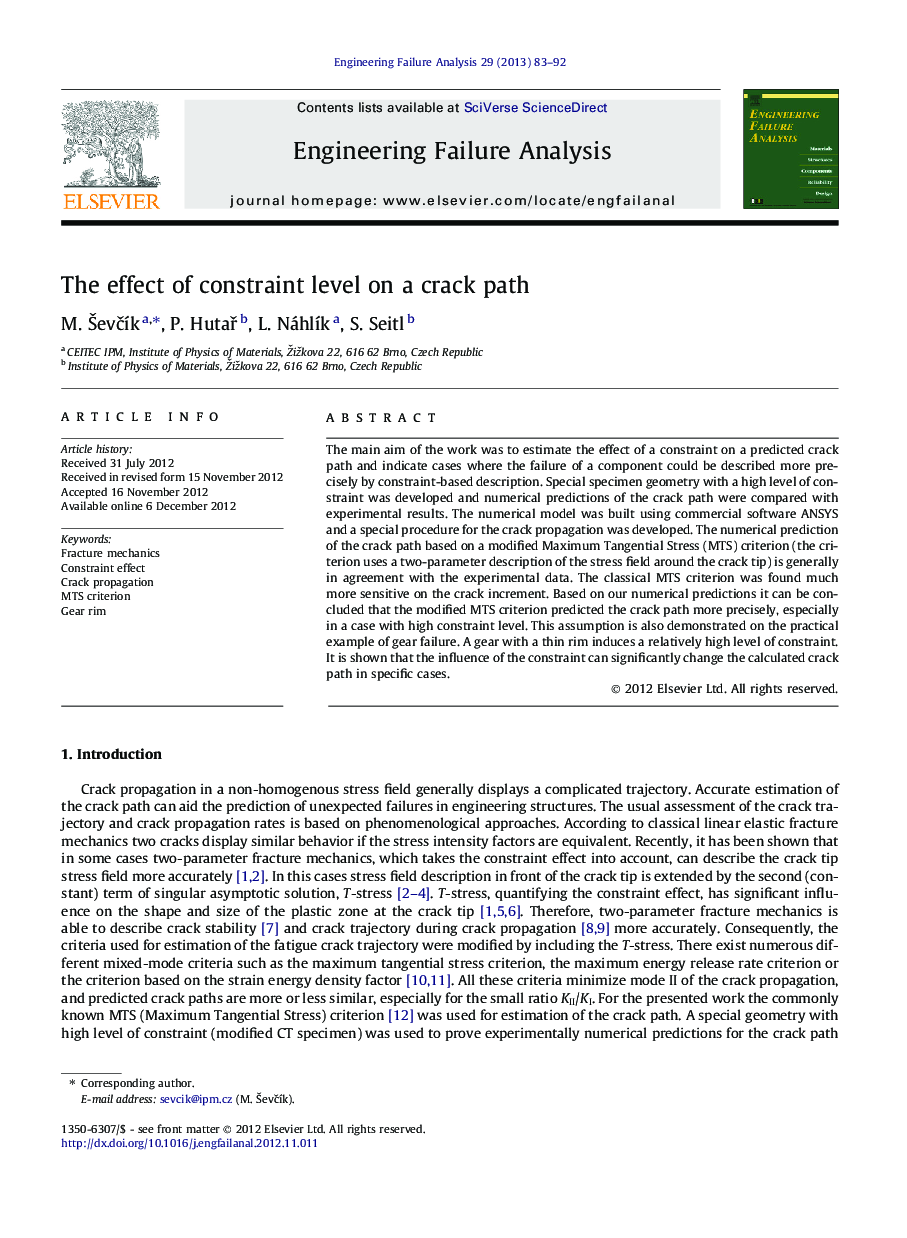| کد مقاله | کد نشریه | سال انتشار | مقاله انگلیسی | نسخه تمام متن |
|---|---|---|---|---|
| 768754 | 1462995 | 2013 | 10 صفحه PDF | دانلود رایگان |

The main aim of the work was to estimate the effect of a constraint on a predicted crack path and indicate cases where the failure of a component could be described more precisely by constraint-based description. Special specimen geometry with a high level of constraint was developed and numerical predictions of the crack path were compared with experimental results. The numerical model was built using commercial software ANSYS and a special procedure for the crack propagation was developed. The numerical prediction of the crack path based on a modified Maximum Tangential Stress (MTS) criterion (the criterion uses a two-parameter description of the stress field around the crack tip) is generally in agreement with the experimental data. The classical MTS criterion was found much more sensitive on the crack increment. Based on our numerical predictions it can be concluded that the modified MTS criterion predicted the crack path more precisely, especially in a case with high constraint level. This assumption is also demonstrated on the practical example of gear failure. A gear with a thin rim induces a relatively high level of constraint. It is shown that the influence of the constraint can significantly change the calculated crack path in specific cases.
► Constraint effect on the crack path is studied numerically and experimentally.
► Modified MTS criterion was applied for estimation of further crack extension.
► Consequences of the constraint effect on crack path prediction is demonstrated on modified CT specimen.
► Methodology is applied on a spur gears with thin rim.
Journal: Engineering Failure Analysis - Volume 29, April 2013, Pages 83–92